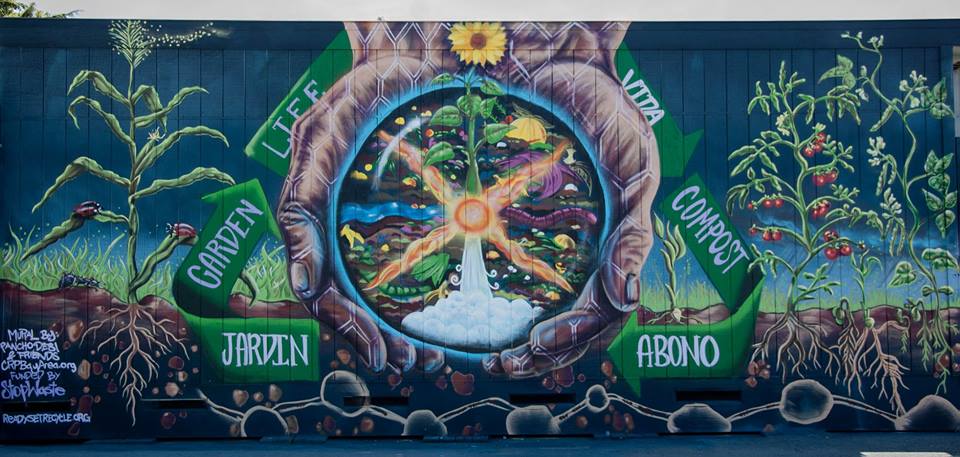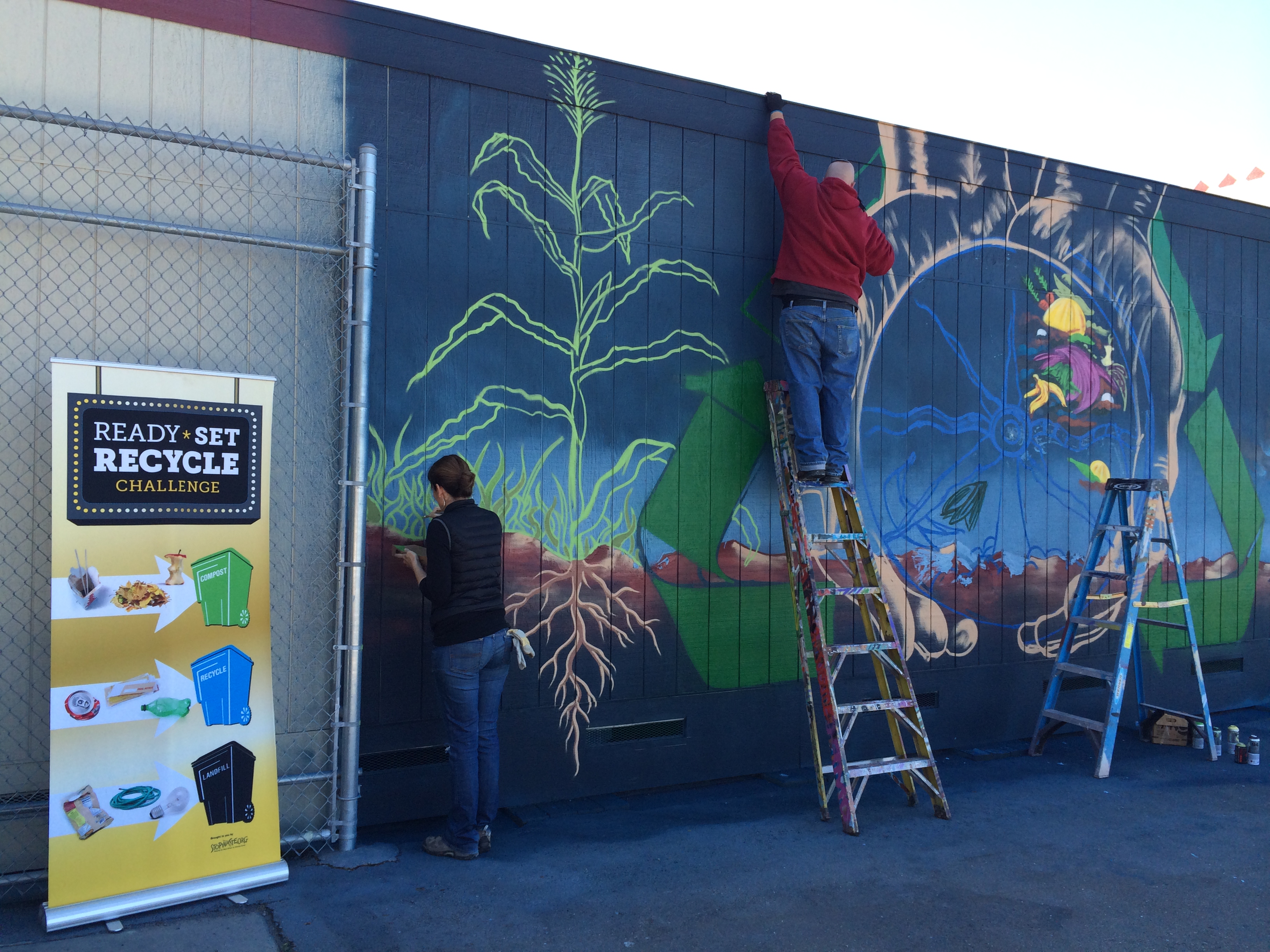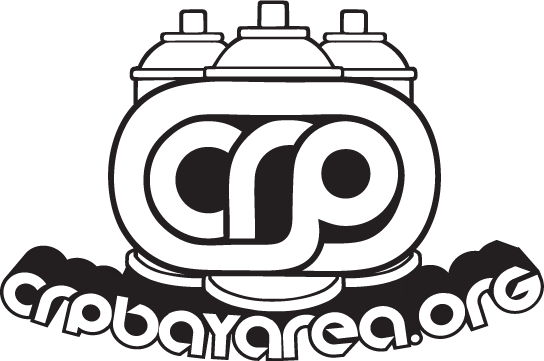
The Completed Composting Mural at Melrose Leadership Academy for StopWaste.org
Did you know composting food waste is one of the easiest and most effective ways of recycling? According to Stopwaste.org, food scraps and food-soiled paper – paper plates, pizza boxes, and paper napkins – comprise the largest portion of the waste stream. Such scraps represent 35% of all waste in Alameda County. While removing harmful toxic waste and hazardous household waste is more complicated and may require safety precautions, recycling food scraps by sending them to a composting facility allows the scraps to be used by landscapers and farmers, where they can benefit the environment, instead of adding to landfill trash.
Recently, Oakland-based muralist collective and non-profit organization the Community Rejuvenation Project (CRP) was commissioned by Stopwaste.org’s Tommy Fenster to paint a mural promoting the org’s campaign to spread awareness about its food scraps recycling program. As Fenster notes, “compostables such as paper coffee cups, meal leftovers (including meat and dairy), coffee filters and pizza boxes can go in the curbside green bin and be mixed with yard debris to create compost. Compost is essential for community gardens and farms since it enriches soil, conserves water, provides erosion control, and grows healthier crops, all while reducing greenhouse gas emissions.”

Artists, students and community residents pledge to start composting!
The mural was painted by CRP artists Desi Mundo and Pancho Peskador at Melrose Leadership Academy, a “dual immersion” school which actively promotes bilingual education, multiculturalism and community awareness. The mural project included facilitating a presentation with StopWaste and staff at Melrose Leadership Academy (MLA), getting folks to sign the pledge to compost, and painting the mural with students and parents, over a two-day period.
As Mundo—who’s also CRP’s Executive Director and founder—notes, “The artists created a circular compost ‘mandala’ emphasizing the air, worms, water used to create new plant life superimposed over a colorful compost pile. The circle is held in by two hands and with the words ‘Compost, Garden, Life’ in Spanish and English. On the sides, corn, beans and tomatoes—all currently in the MLA garden boxes—are growing. From underneath the ground, ants and other insects from gardens support the cycle of life.”
MLA principle Moyra Contreras said, “”Educating young people on the importance if composting food waste not only will help to positively impact the amount of garbage they produce as adults in the future, it will reduce waste now as they go home and educate their families. The MLA mural is a great educational tool and a beautiful reminder of our responsibility to the earth.”

Ready, Set, Recycle!
The simple message of the mural—that composting can help ‘green’ communities organically—was an easy one for CRP to get behind. Previously, CRP has partnered on mural projects with food justice organizations like People’s Grocery, Phat Beets, and Urban Tilth; and, as Mundo explains, “many of our artists are gardeners eager to spread the word about composting.”
Noting that the MLA mural was a “logical continuation” of CRP’s commitment to community engagement and past work, Mundi adds, “From an organizational standpoint, we are hoping to build on our ongoing partnerships with food justice organizations to create a powerful campaign raising awareness about the benefits of compost through public art. We feel strongly that a series of murals on composting would be deeply engaging and impactful to the community.”
To donate to CRP, click here.
For more info about composting and StopWaste.org’s food scrap recycling program, click here.
